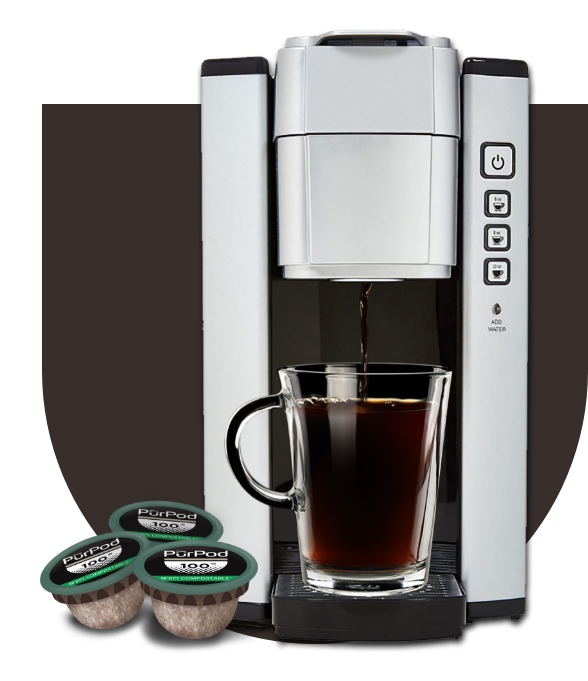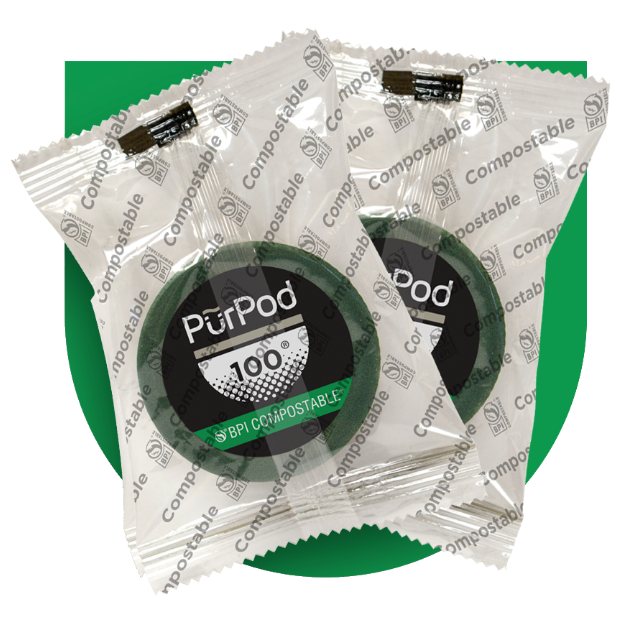Sustainability
The Surprising Environmental Story of Single Serve Coffee Vs. Brewed Coffee
Coffee Makers
An independent Life Cycle Analysis (LCA) determined that if North American consumers switched to single serve coffee systems, there would likely be environmental benefits including reduced water and coffee waste. However, that’s only part of the story…

PURPOD100®
The life cycle of a single serve coffee pod includes its environmental effects and energy use from the farm, to overseas transportation, to coffee roasting, to your kitchen and into waste disposal.

What The Research Found
Wasted coffee and electricity consumption during brewing and heating are more significant than packaging when you compare single serve coffee and brewed drip coffee. The analysis identifies three key benefits of single serve coffee.
Single serve coffee uses an exact serving of fresh coffee in a controlled process – leading to minimal coffee wastage.
Consumers are more likely to prepare more drip brewed coffee than they need.
Whatever we pour down the sink wastes all the energy, water and resources it took to produce that coffee.
The Convenience of Single Serve, Without the Waste
“With the rise of single serve, the coffee sector is losing its best customer – the kitchen sink.”
The Impact of single serve coffee
The LCA determined that if North American consumers switched to single serve coffee systems, there would likely be environmental benefits including coffee waste reduction. Additional benefits could be achieved with the development of coffee machines with better energy-saving capabilities and extended service lives.
Packaging, Food Waste and the Environment: A Coffee Case Study, July 2015

Learn more about the world of PURPOD100®
Designed with the environment in mind, PURPOD100® is certified commercially compostable†.
Defining Compostability
Why is PURPOD100® commercially compostable† and not biodegradable or recyclable?
Learn More

